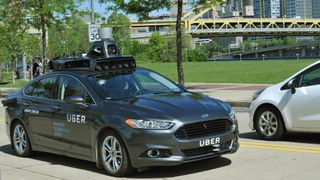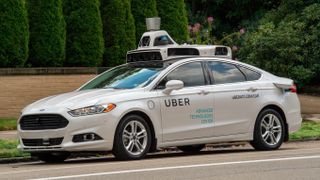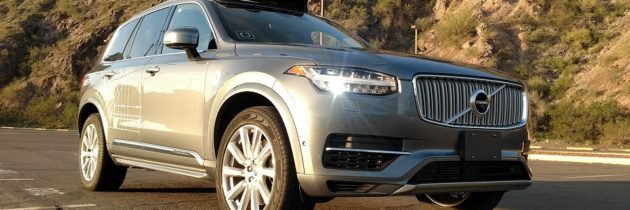Uber self-driving cars: everything you need to know
This article original posted on techradar.com
An uneasy mix of innovation and controversy
Uber started out as a service that was as appealing to potential drivers as it was to urban passengers weary of cabs: with your own car and some spare time, you could make some cash by ferrying folks to where they needed to go.
Lately, though, Uber has set its sights on replacing human drivers through its self-driving car program.
Few other firms have embraced this initiative with as much zeal and resources, and the San Francisco-based company had self-driving cars on public streets well before some of its most prominent competitors.
Like so much about the company, though, Uber’s efforts in autonomous car technology aren’t without controversies. Below, we’ve compiled everything you need to know about Uber’s attempts to steer us toward a driverless future.
How’d it all start?
Following months of rumors and vocal support for automation on Uber’s part, Uber first announced its intentions to amass a fleet of automatic cars in February 2015, which happened to be the same week that Google announced its own interest in autonomous car technology. (Pay attention, kiddos, for this is important for our tale.) Shortly after, Arizona Governor Doug Ducey invited Uber to test its cars in the state.
Initially, though, the project kicked off in Pittsburgh, Pennsylvania, where Uber had hired a bunch of researchers from Carnegie Mellon University and helped revitalize Pittsburgh’s Strip district with the opening of the company’s Advanced Technologies Center.
Uber’s initial fleet included 20 Ford Fusions, which seemed like a whole armada back when autonomous cars still felt like science fiction.

One of the early Ford Fusions
The cars themselves were packed with around 20 cameras, seven lasers, a GPS, radar and LIDAR, a technology that measures the distance reached by outgoing lasers so cars can “see” and interpret the action around them.
Uber quickly began showing off its cars to reporters on trips throughout Pittsburgh, but in every case the car had a “safety driver” that would grab the wheel if things got rough.
A continent of tests
Following the first experiments with the Ford Fusions, the Volvo XC90 became the vehicle of choice for automation in Uber’s first rides on the streets of Pittsburgh.
Initially Pittsburgh mayor Bill Peduto welcomed Uber and its 100 Volvos with open arms, claiming that it was necessary to roll out the red carpet rather than red tape for Pittsburgh to “be a 21st-century laboratory for technology.”
Uber took advantage of the relative freedom to dive into testing in Pittsburgh at full strength, even to the point of building a fake city called Almono outside town to test cars before unleashing them in the Steel City. Even so, the early months were full of light collisions and traffic violations.

The relationship between Pittsburgh and Uber soured quickly. As The New York Times reports, Peduto didn’t get any written agreement from Uber, which came back to haunt him and the city.
Uber started charging fees for autonomous car rides, even though Peduto was under the impression that the rides would be free, and the company withdrew support for a $50 million grant meant to revitalize Pittsburgh’s local transportation.
For that matter, Uber’s presence didn’t create jobs on the level that Peduto had apparently expected. The relationship has improved as of late, but it’s still rough.
Uber also started testing 16 automated cars in its hometown of San Francisco in December 2016, but as Ars Technica reports, the California Department of Motor Vehicles quickly revoked the registration for the vehicles because Uber refused to secure a special permit that would register them as test vehicles. (Uber’s automated tests eventually returned to San Francisco in May 2017.)
Undaunted, the same month Uber started tests in the neighboring state of Arizona, on the streets of Tempe.
In March 2017, one of Uber’s automated car was in a wreck in Tempe, although blame fell on the human driver of another car for not yielding the right of way. Uber briefly suspended its fleet in order to investigate. A later crash happened in September, but, again, human error was involved.
In late 2017, Uber extended its tests to Canada, and set two automated cars on the streets of Toronto.
What’s all this about a lawsuit?
Waymo (the self-driving car company created after Google’s restructuring into Alphabet) asserts that former Google employee Anthony Levandowski downloaded around 14,000 files of proprietary data relating to autonomous cars before leaving the company to found Otto, an autonomous truck company. Uber later bought Otto in 2016 for $700 million, and Levandowski took the helm of Uber’s self-driving car efforts.
The trouble began when one of Uber’s parts suppliers accidentally copied Google on an email with information about Uber’s LIDAR circuit board, which Google said looked almost exactly like its own.
And so it was that the company turned around and sued Uber in February 2017 for stealing trade secrets. Uber, for its part, called the lawsuit a “baseless attempt to slow down a competitor.” Opening arguments finally began on February 5, 2018.
What are Uber’s self-driving plans for the future?
Uber may have had two of the most high-profile automated car accidents and is mired in a lawsuit that threatens its very existence, but the company remains committed to its vision of replacing human drivers in a big way.
In addition to focusing on research that allows vehicles to navigate on their own, Uber is also seeking ways to minimize motion sickness in automated vehicles.
In fact, it made the world’s first large commercial purchase of cars intended for an automated fleet. On November 20 of last year, Uber committed to buying 24,000 Volvo XC90 SUVs that will be delivered between 2019 and 2021. (Notably, Volvo itself plans to have an automated fleet of its own on the ground in 2021.)

As impressive as that number sounds, though, you shouldn’t expect automated cars to start completely replacing human Uber drivers within the next few years. At the time of writing, Uber still employs around 2.5 million human drivers worldwide.
Even so, current Uber CEO Dara Khosrowshahi expects the company will move beyond testing quickly, as he said in early 2018 that he expects Uber self-driving cars will be available to the public in as little as 18 months.
If Uber has its way, those are the only self-driving cars you’ll see. In a recent interview, Uber seemed to suggest that it wants to prevent individuals from owning self-driving cars in urban environments to better keep track of emissions and adhere to regulations.
There’s a long road ahead yet; now Uber just needs to make sure its automated cars can stay the course.



